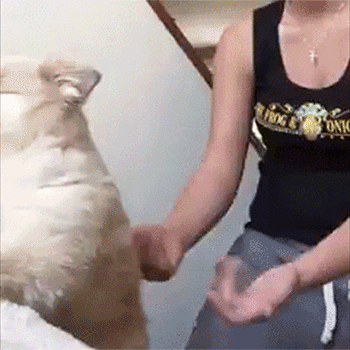
Real Estate Marketing Guide for 2021 (part 3)
PART 3: Branding
Personal identity vs. brand identity
If you’re a solopreneur, and acting alone as a realtor, your reputation is in essence your brands reputation and vice versa. But if you’re working with a group of agents under you, remember that they each have their own reputation tied to your brand’s identity.
Your clients (and leads for that matter), need to see consistency between your brand and your agents’ brands to trust you with their business. We spoke about congruence earlier, but with branding, it is super important.
It could be difficult for brokerages to keep agents if they find that their brands don’t work together. I think that you should stay consistent to your core identity, but be flexible so agents can add their own bit of flair and voice to their marketing.
Rigid, but flexible. A bending tree.
This will keep your brand strong but give your agents some freedom to create their own.

Your brand identity - Branding quiz
If you’re worried about your own identity or brand voice, not sure what type of message exactly are you trying to put out there, or how to best say/do it - you can contact me and we’ll figure what makes you special, what is your unique value proposition, and how to market it best.
You could also try out some of these cool quizzes, to see what is your brand type.
-
Brand identity
This quiz will help you determine how well your brand’s identity is established, and how to improve your brand’s perception throughout the company.
[Take the quiz]
-
Brand management
This quiz focuses on how to handle your brand assets (such as logos, colors, and fonts) in your communications with clients, agents, partners and vendors.
[Take the quiz]
-
Brand consistency
So you have a brand, but are you consistent in its use? This quiz will show you how to keep your brand well-protected from rogue content.
-
Sales enablement
This quiz considers the creative process your company goes through, from the initial design requests to the final branded content and how it’s used.
[Take the quiz]
-
Marketing collateral
In this quiz, you’re asked to consider where your marketing collateral is used, whether it’s print or digital, and what guidelines you use to keep collateral consistent.
[Take the quiz]
Now that you’re clear on what it is that sets you apart, and you have a sense of what your brand is, let’s talk about how to best manage it.

3 stages of brand management
The truth is, your brand, and brands in general, aren’t merely managed -- they’re shaped, guided and cultivated over time.
To break down this process, let's look at brand management in three different phases: establishing, positioning and maintaining.
1. Establish the brand:
The diapers stage.
This is where you create your brand. Now, this is more than just the:
- Words (my paper on how words persuade clients, which I obviously recommend).
- Logos
- Fonts
- Colors
(Which should not be taken lightly, as colors, symbols, and fonts have a huge psychological effect on how a brand is perceived, and how to make people feel).
You can also adjust them throughout your career/business lifespan, as your brand grows, and adjust and improve upon existing concepts.
But to my point, branding is more than those things, as it also includes the big ideas behind your brand.
-
What will your voice be like?
-
What values do you stand for?
-
How will you interact with clients?
-
What separates you from others in your space?
-
Heritage - what will people say about your beginning, journey, and brand in 20 years?
There should be a definitive beginning and end to this phase that results in a strong brand identity.
2. Position the brand:
Crafting a strong brand identity is just the first step, now it's time to communicate it to the world and more precisely, to your clients. Each interaction with the public should set and reinforce the expectations for your brand. Your website copy, email copy, ads copy, flyers copy, and everything in between should be congruent with your brand identity.
3. Maintain the brand:
The first two stages are hard, but it's actually the third step which most companies fail at (real estate included).
Relationships and bonds are based on trust, and trust takes time to build. It is the sort of thing that could be easily destroyed in one transaction -- after being carefully managed for a decade.
The more expensive a product or service is, the more trust needs to be established before the prospect feels comfortable going through with the sale.
In real estate, a field with higher prices compared to other industries; networking, referrals, and testimonials are so important, and brand management is paramount - because clients need to feel that they can trust you.

Brand consistency stats you need to know
Lucidpress conducted brand research with firm Demand Metric, where they surveyed over 200 senior marketing leaders at companies of all different sizes and of all industries.
They asked them questions about brand consistency and how they feel it impacts their business. Here are some of our key findings:
-
Less than 10% said their brand presentation is very consistent.
-
Nearly 90% agree that it’s important to present their brands consistently.
-
71% say the greatest negative impact of inconsistent branding is confusion in the market.
-
Organizations with brand consistency issues estimate, on average, a 23% increase in revenue if their brand was always presented consistently.
Double-edged-sword
During this brand management research, it was discovered that the two most common scenarios just so happen to be polar opposites. Most organizations fall into one of these:
-
Brand-dictatorship
A reality where no one is allowed to make content except for corporate staff. Designers are overloaded by all of the updates and tweaks they have to make, instead of focusing on bigger projects. Understandably, designers and agents both feel stymied and frustrated.
-
Brand-less
A reality where there are no brand management guidelines, or they are not enforced. Rogue content is everywhere as members of your team make their own materials without any direction. Understandably, your brand consistency suffers.
Of course, you want your brand to be somewhere in between. How much? That’s the beauty of it. You get to decide how rigid or how flexible you are, and how much can the tree bend.
Aim for strong values, with clear guidelines, with enough freedom for creativity and spark.
Brand control on social media
With 2.78 billion active users, social media represents an alluring opportunity to reach your audience and potential clients.
However, you don’t want to simply leap onto any available social media platform without a strategic plan. There are many benefits to maintaining brand control on social media.
First, you should ask yourself three questions:
-
Who is your audience?
-
What social media platforms do they visit?
-
What language and tone will you use when engaging with them?
The answers will lead you down the right path when planning your social media branding.
The next important thing to remember is consistency. Make sure you’re consistent with your usernames, logos, imagery and colors, and most importantly - your message -- across all of the platforms you use.
Be consistent with the topics you post, and contribute to the conversation frequently.
How to make your brand stand out
Creating branded content will give your agency a serious boost, as you consistently give clients a value wrapped up in your own unique voice, with your own creative spin. People will see the content, and say: “oh yea, that’s most definitely an article by X”. They will learn to recognize your style.
Here are some tips for how you can go above and beyond to really stand out in the real estate industry.
-
Boost your credibility with client testimonials.
-
Leverage the power of social media to reach potential clients.
-
Give your agents the tools to represent your brand consistently.
-
Use direct mail to target the people other agents aren’t reaching.
-
Make sure your property listings are unique, interesting, and tell a story.
-
Create case studies of success stories, and sometimes failures, to show you've learned.
-
Provide tons of value through blogging for free to better position your brand as an authority in the space.
Reading these methods is one thing. Implementing them properly is another. I can help!

Real estate agent retention & acquisition
Creating a strong real estate brand will not only help you find the best potential clients. In case you have a firm, it will also help you attract and keep the best real estate agents.
By maintaining a powerful brand that permeates every communication within your company, you can share your vision with your real estate agents and easily get them onboard.
If your brand is weak and inconsistent, then real estate agents may be tempted to leave for greener pastures where they see their own values and career potential reflected in the brokerage’s brand. As you’re working on your brand identity and image, don’t just focus on getting the message to your customers. Let your agents be part of the brand story you are telling.
Real Estate Marketing Case Studies
So, who’s doing an exemplary job with real estate marketing & branding? There are some really impressive agencies & brokerages out there, but here are 2 good examples:
1. TOLL BROTHERS — SOCIAL MEDIA
Toll Brothers is a luxury real estate brand that’s been around since 1967.
For a brand that’s been around for decades, Toll Brothers has excelled at adapting their message to new online platforms—like social media.
For example, take a look at their YouTube channel, where they share videos that appeal to aspirational homeowners.
Not only do they cover the expected (like testimonials and property tours), there’s also the unexpected cooking and outdoor videos, which makes them unique.
Similarly, Toll Brothers’ Pinterest page is chock-full of enviable boards about active living and dream room designs.
Finally, with over 50k followers on LinkedIn, Toll Brothers is serious about building a corporate brand its agents can be proud of.
2. CARDINAL REAL ESTATE PARTNERS — EMAIL NEWSLETTERS
Cardinal Real Estate Partners are proof good copywriting through email marketing is the way to stand out and gain attention.
Their weekly newsletter delivers insightful, high-quality content to their commercial real estate clients—and it netted them an award in the 2017 #REMAS. Here’s what they had to say about their newsletter:
-
“Newsletters have proven to be a fantastic way to stay relevant to one’s contacts, I’ve also found. After 25 years, I literally have a Rolodex of more than 10,000 names that I’ve built and kept fresh through my writing.”
-
“Throughout the years I’ve come to firmly believe that for a small shop it is important to highlight one’s experience and share insights, processes, checklists, and other strategies and tools.”
That’s it. This 3-part-guide comes to an end, where we spoke about digital marketing, technology, and now branding.
If you are looking for someone competent to help you achieve your marketing goals in the real estate space, reach out to me and fill out an application form.
